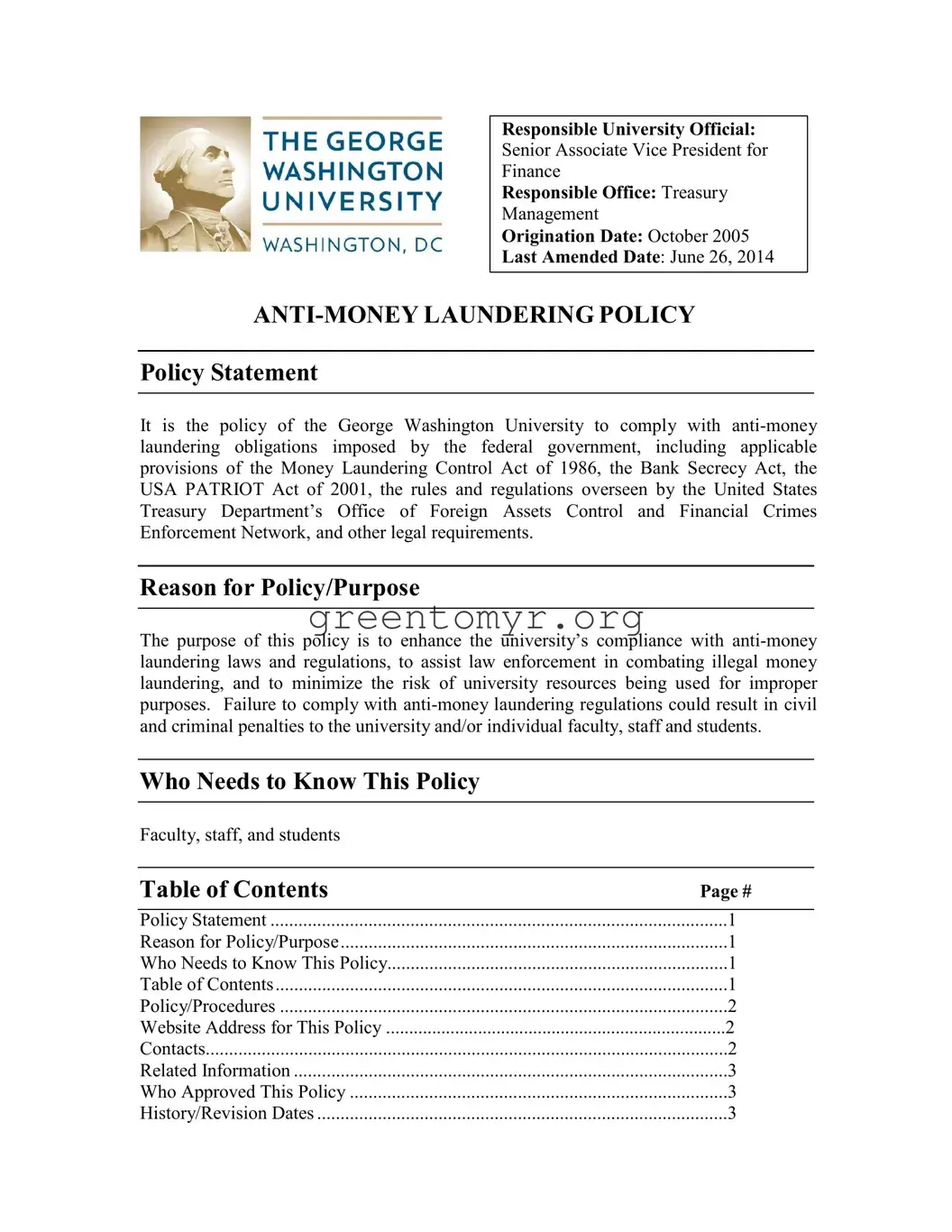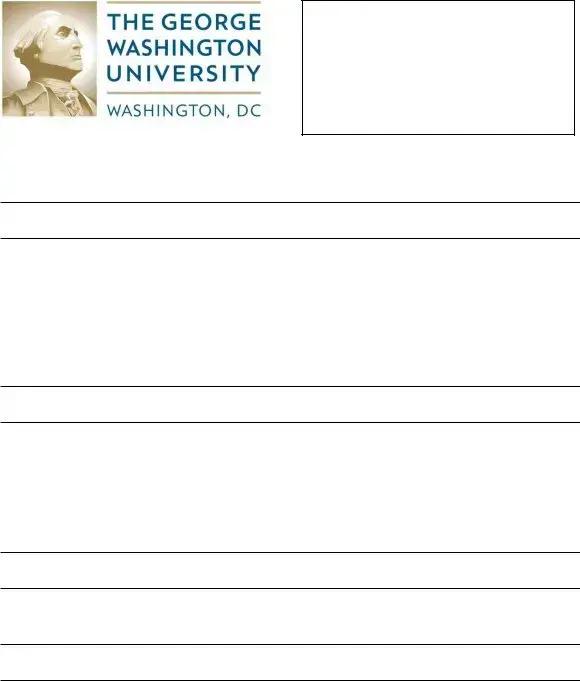Responsible University Official:
Senior Associate Vice President for
Finance
Responsible Office: Treasury
Management
Origination Date: October 2005
Last Amended Date: June 26, 2014
ANTI-MONEY LAUNDERING POLICY
Policy Statement
It is the policy of the George Washington University to comply with anti-money laundering obligations imposed by the federal government, including applicable provisions of the Money Laundering Control Act of 1986, the Bank Secrecy Act, the USA PATRIOT Act of 2001, the rules and regulations overseen by the United States Treasury Department’s Office of Foreign Assets Control and Financial Crimes Enforcement Network, and other legal requirements.
Reason for Policy/Purpose
The purpose of this policy is to enhance the university’s compliance with anti-money laundering laws and regulations, to assist law enforcement in combating illegal money laundering, and to minimize the risk of university resources being used for improper purposes. Failure to comply with anti-money laundering regulations could result in civil and criminal penalties to the university and/or individual faculty, staff and students.
Who Needs to Know This Policy |
|
Faculty, staff, and students |
|
Table of Contents |
Page # |
Policy Statement |
1 |
Reason for Policy/Purpose |
1 |
Who Needs to Know This Policy |
1 |
Table of Contents |
1 |
Policy/Procedures |
2 |
Website Address for This Policy |
2 |
Contacts |
2 |
Related Information |
3 |
Who Approved This Policy |
3 |
History/Revision Dates |
3 |

ANTI-MONEY LAUNDERING POLICY
Policy/Procedures
Money laundering is conducting or attempting to conduct a financial transaction knowing that the transaction is designed in whole or in part to conceal or disguise the nature, location, source, ownership, or control of the proceeds of specified unlawful activity. To assist the federal government in detecting, preventing, and eradicating criminal and terrorist financing and activity, the university will take all necessary steps to comply with applicable anti-money laundering laws and regulations.
The university will maintain an anti-money laundering program in accordance with the Bank Secrecy Act, as amended by the USA PATRIOT Act, and other applicable federal laws and regulations. The program is reasonably designed to prevent university services from being used to facilitate money laundering and the financing of terrorist activities. The program includes the following:
•Procedures to verify customer identification and retain necessary identifying and transactional information;
•A designated compliance officer to coordinate compliance with the program;
•Suspicious activity reporting procedures and document retention guidelines for any suspicious activity reports and supporting documentation;
•Training and education of appropriate university personnel concerning their responsibilities under the program, including suspicious activity reporting; and
•Independent review to monitor and maintain an adequate program.
Concerns regarding transactions that are unusually large or that appear suspicious and questions regarding money laundering in general should be directed to the university’s Treasury Management Office at 202-994-0985.
Website Address for This Policy
GW University Policies
Contacts
Subject |
Contact |
Phone |
Money |
Treasury Management |
703-726-4216 |
Laundering |
|
|
ANTI-MONEY LAUNDERING POLICY
Related Information
Bank Secrecy Act, 12 U.S.C. §1951, et seq.
31 U.S.C. § 5311, et seq.
31 C.F.R. Part 1010, 1022
Money Laundering Control Act of 1986, Public Law 99-570 USA PATRIOT Act of 2001, Public Law 107-5
A Brief Primer on Doing Business Abroad: U.S. Laws that Affect GW’s International Activities
Compliance with Law when Conducting University Activities Overseas
Who Approved This Policy
Louis H. Katz, Executive Vice President and Treasurer
Beth Nolan, Senior Vice President and General Counsel
History/Revision Dates
Origination Date: |
October 2005 |
Last Amended Date: |
June 26, 2014 |
Next Review Date: |
June 30, 2015 |



